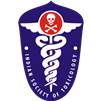Pyrethroid Insecticide Toxicity: Current Concepts and Review of Literature
Keywords:
Insecticide; Pyrethroid poisoningAbstract
Pyrethroids are synthetic organic compounds synthesized from chrysanthemum flowers that are used extensively as household and commercial insecticides. The ketoalocoholic esters of chrysathemic and pyrethroic acid being lipophilic are responsible for its insecticidal properties. Pyrethroids are broadly classified into first and second generation pyrethroids. The first generation (Type I) pyrethroids are less toxic to mammals than the second generation (Type II) pyrethroids.
Pyrethroids act by a variety of mechanisms which are primarily directed towards the sodium and chloride channels. The main route of absorption is through the skin as a result of occupational exposure. Inhalational exposure and ingestion remain the other routes of poisoning.
Local skin exposure produces paraesthesiae due to hyperactivity of cutaneous sensory nerves that is usually self-resolving. Following inhalational exposure, nasal and respiratory irritation can occur. Asthma-like symptoms have been observed. Massive doses have resulted in symptoms of pulmonary oedema. Mild eye irritation and miosis can occur on ocular exposure.
In the event of a poisoning, timely intervention is required. No specific antidote is available for pyrethroid poisoning and the management remains supportive and symptomatic. The incidence of poisoning and death from pyrethroid poisoning is reportedly low due to the fact that extremely large doses are required for lethal effects, and a large number of cases go unreported, either due to mis-diagnosis or due to lack of an efficient system for recording and reporting of such events.


